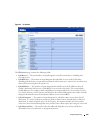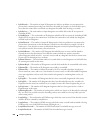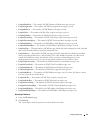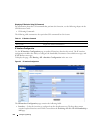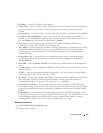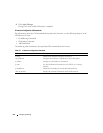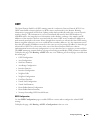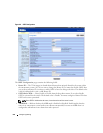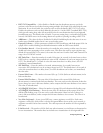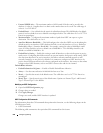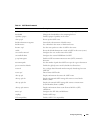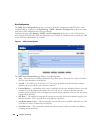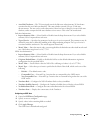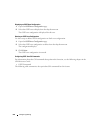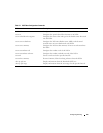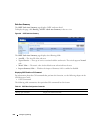
Configuring Routing 517
•
RFC 1583 Compatibility
— Select Enable or Disable from the drop-down menu to specify the
preference rules that are used when choosing among multiple AS-external-LSAs advertising the same
destination. If you select Enable, the preference rules are those defined by RFC 1583. If you select
Disable, the preference rules are those defined in Section 16.4.1 of the OSPF-2 standard (RFC 2328),
which prevent routing loops when AS-external-LSAs for the same destination have been originated
from different areas. The default value is Enable. To prevent routing loops, you should select Disable,
but only if all OSPF routers in the routing domain are capable of operating according to RFC 2328.
•
ABR Status
— The values of this are Enabled or Disabled. Enabled implies that the router is an area
border router. Disabled implies that it is not an area border router.
•
Opaque LSA Status
— Set this parameter to Enable if OSPF should store and flood opaque LSAs. An
opaque LSA is used for flooding user-defined information within an OSPF router domain.
•
Exit Overflow Interval
— Enter the number of seconds that, after entering overflow state, the router
should wait before attempting to leave overflow state. This allows the router to again originate non-
default AS-external-LSAs. If you enter 0, the router does not leave Overflow State until restarted. The
range is 0 to 2147483647 seconds.
•
SPF DelayTime
— Enter the number of seconds, Delay time (in seconds) is the time between when
OSPF receives a topology change and when it starts an SPF calculation. It can be an integer from 0 to
65535. The default time is 5 seconds. A value of 0 means that there is no delay; that is, the SPF
calculation is started immediately.
•
SPF HoldTime
— Enter the number of seconds, minimum time (in seconds) between two
consecutive SPF calculations.It can be an integer from 0 to 65535. The default time is 10 seconds. A
value of 0 means that there is no delay; that is, two SPF calculations can be done, one immediately
after the other.
•
External LSA Count
— The number of external (LS type 5) LSAs (link state advertisements) in the
link state database.
•
External LSA Checksum
— The sum of the LS checksums of the external LSAs (link state
advertisements) contained in the link-state database. This sum can be used to determine if there has
been a change in a router's link state database, and to compare the link-state databases of two routers.
This value is in hexadecimal.
•
AS_OPAQUE LSA Count
— Shows the number of opaque LSAs with domain wide flooding scope.
•
AS_OPAQUE LSA Checksum
— Shows the sum of the LS checksums of the opaque LSAs with
domain wide flooding scope. This sum can be used to determine if there has been a change in a
router's link state database, and to compare the link-state databases of two routers. This value is in
hexadecimal.
•
New LSAs Originated
— In any given OSPF area, a router originates several LSAs. Each router
originates a router-LSA. If the router is also the Designated Router for any of the area's networks, it
originates network-LSAs for those networks. This value represents the number of LSAs originated by
this router.
•
LSAs Received
— The number of LSAs (link state advertisements) received that were determined to
be new instantiations. This number does not include newer instantiations of self-originated LSAs.



